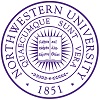专业详情
The range of options available makes the MPhil Cuneiform Studies suitable both for graduates who have already studied Cuneiform, and for those with no previous experience in the field.
If you have a Cuneiform background, you will be able to build on your previous studies and gain specialised expertise. If you have graduated in another discipline, you will be able to convert to Cuneiform studies through a course that offers a progression from beginning the Akkadian and Sumerian languages to individual research. The course will provide the opportunity to develop a research area of your choice and elements of the course will be tailored to your individual interests.
The study of Akkadian and Sumerian, the two principal ancient languages of Mesopotamia, lies at the heart of the course. The principal focus throughout is on detailed familiarity with the primary sources, studied in the original languages and scripts. The course is designed to equip you with a sound knowledge of Akkadian and Sumerian grammar, vocabulary, and cuneiform script, as well as developing your ability to tackle published, but unedited Cuneiform texts.
Familiarity with the secondary literature and study aids such as dictionaries and sign lists, as well as historiographical and literary-critical approaches, are integral to the course. In addition to this textual focus, the cultures, history, and archaeology of Mesopotamia and neighbouring areas are fundamental course components. You will have the opportunity to develop your skills working with ancient Near Eastern artefacts, including cuneiform tablets, in the Ashmolean Museum.
The Cuneiform world is also studied in a wider context. Options include the Egyptian, Biblical, and Classical worlds, as well as the later Near East. The MPhil thesis will provide you with the opportunity to identify and design a cuneiform-related research project and to develop advanced research skills.
From the beginning of the course, you should expect to be engaged in academic work for a minimum of thirty-five hours a week during full term and you will need to do a considerable amount of work during the vacations. The course is taught through a mixture of classes (mainly language classes), lectures, and seminars, with some tutorials. Tutorials normally consist of a one-to-one discussion with a tutor based on written work produced by the student. The syllabus is flexible and designed to meet the needs and interests both of those new to the field and of those who have studied cuneiform at undergraduate level.


